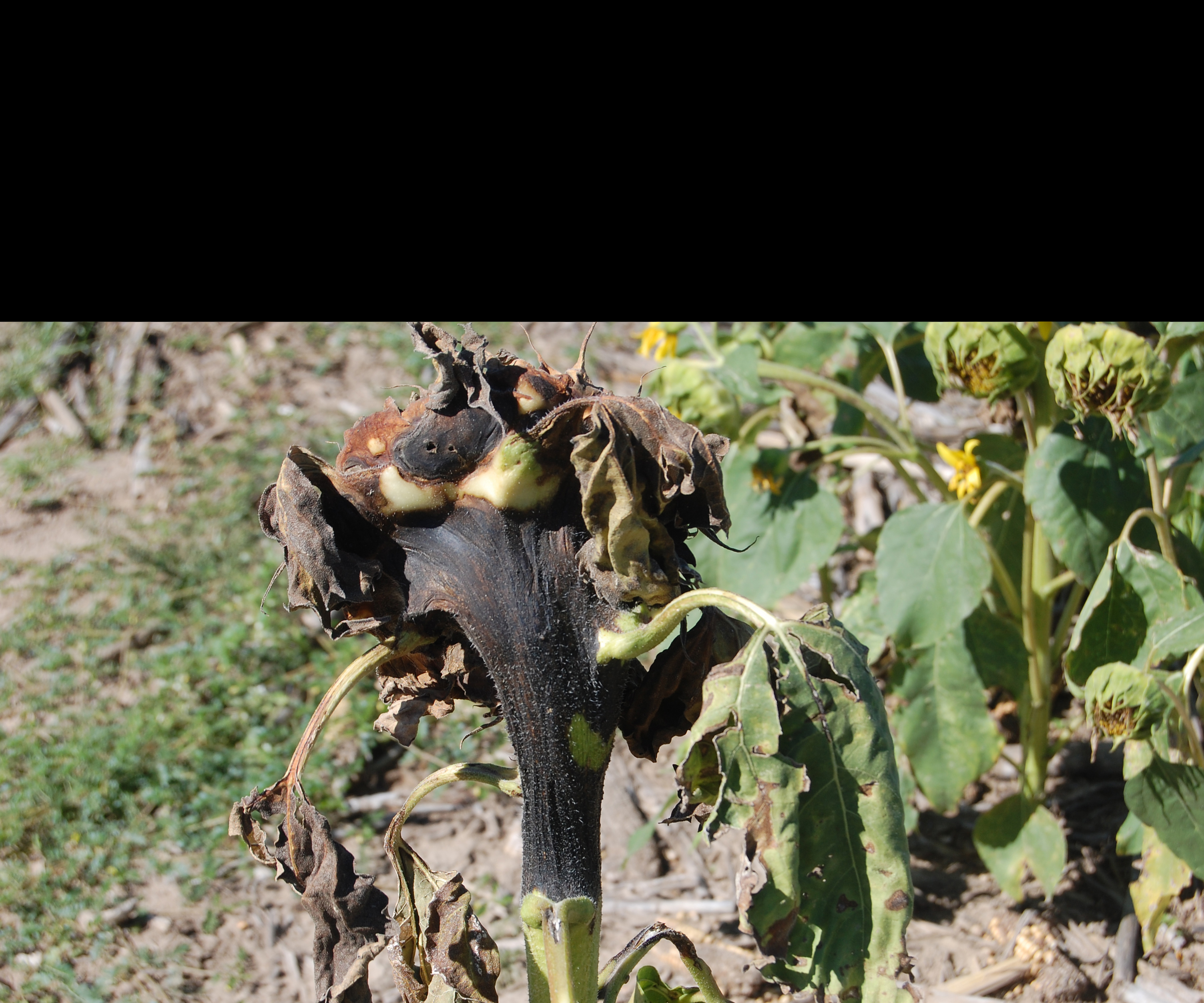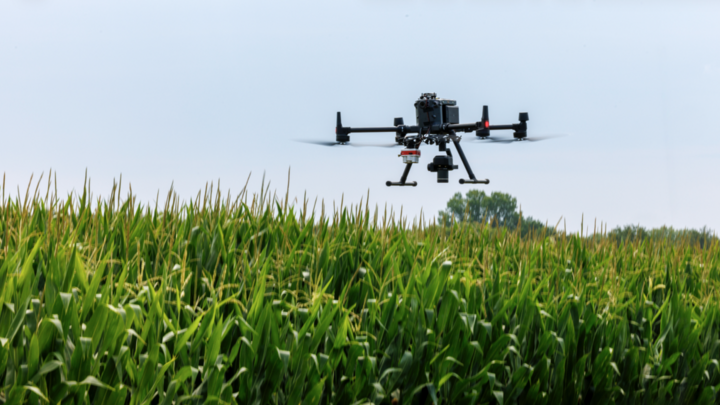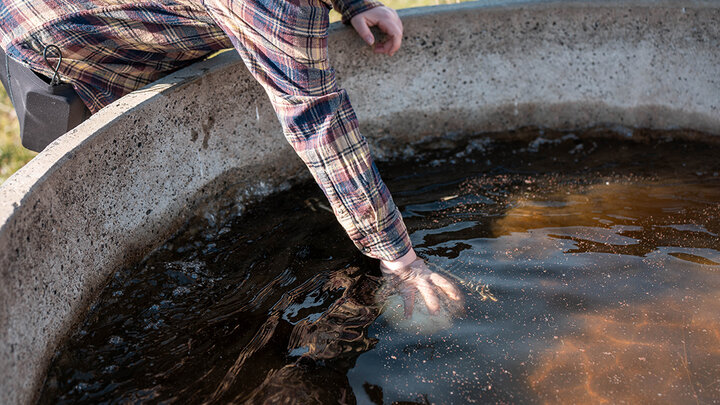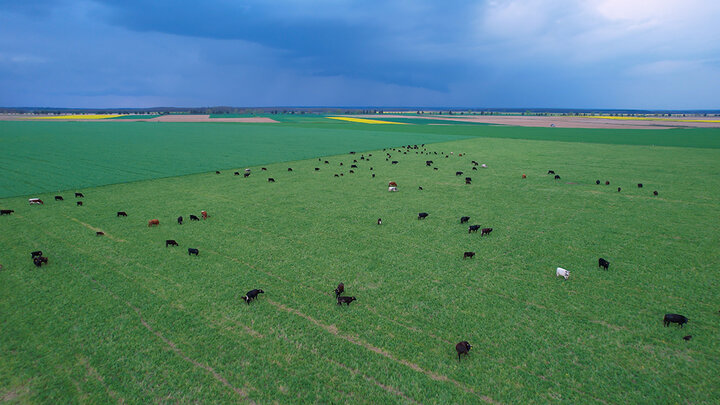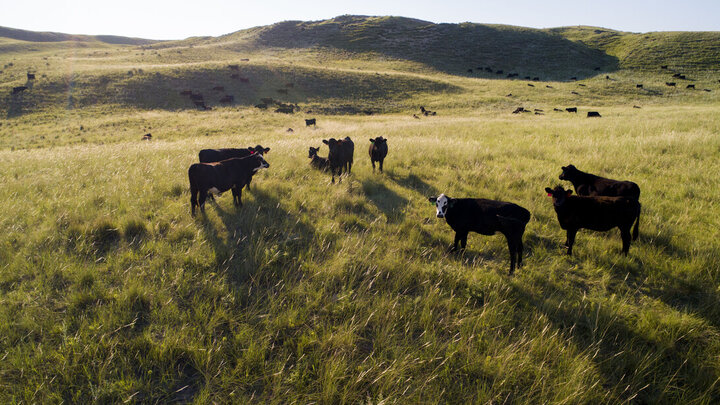By Robert Harveson, Extension Plant Pathologist
Pathogens
Fungal structures: pycnidia, and conidia. Both diseases are caused by similar pathogens. Phoma black stem is caused by the fungus Phoma macdonaldii Boerema, and Phomopsis stem canker is caused by Phomopsis helianthi M. Muntanola-Cvetkovic. Both fungi over winters as pycnidia and possibly mycelium in infected residue. Conidia are released from pycnidia and spread to neighboring plants from rain splashing or insects. The diseases can occur at any time in the season, but are most common after flowering.
Disease Symptoms
Dark black lesions start on the stem at the base of leaf petioles and spread along stems. Lesions generally reach several inches in length. Eventually leaves wilt and dry up and stalks may turn dark brown to black. Large dark lesions may also form on leaves and flowers. Symptoms of Phoma black stem may be confused with Phomopsis stem canker, but are differentiated from Phomopsis infections by stem lesions of different sizes and color. Phomopsis induces lesions reaching 6 inches in length and later turn ash gray. Phomopsis causes greater stem degradation than Phoma, so stems are easily crushed when pressure is applied to infected stems. Additionally stem lesions with Phomopsis are initially brown that become darker with a wet appearance.
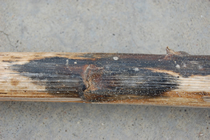
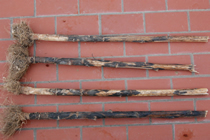
Small black spots (pycnidia) may be observed with a hand lens in mature lesions of both diseases. Symptoms of premature ripening and early dying may also occur. Infected plants are weak at infected nodes and may be more susceptible to lodging. Girdled plants have black to brown roots and a black to brown lesion at the soil line. Premature ripening results in small heads and seeds that are not filled properly, and oil content of seeds can be reduced.
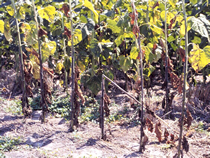
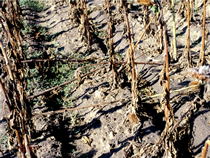
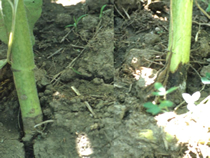
Favorable Environmental Conditions
Black stem and stem canker are most severe when abundant moisture is available during and after flowering.
Management
Genetic Resistance
Some cultivars are more resistant to the diseases than others, but no hybrids are available with immunity
Cultural Practices
No control measure is completely effective. However, crop rotation will decrease soil populations of the pathogen. Good insect control will also limit the spread of disease. Burial of infected residue or not planting near previously infested fields will also contribute to reducing disease potential in subsequent crops.
Chemical/Biological Control
No fungicides are available for these diseases.
